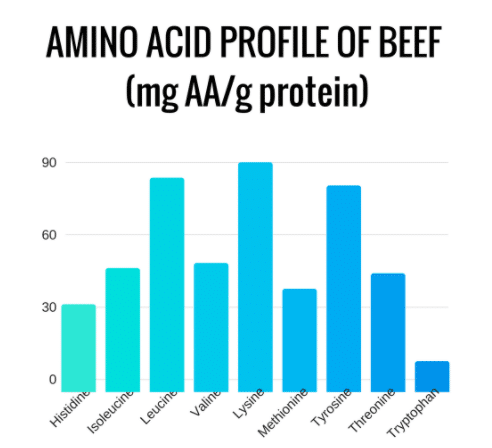Editors note: This article is an op-ed. The views expressed herein and in the video are the authors and don’t necessarily reflect the views of BarBend. Claims, assertions, opinions, and quotes have been sourced exclusively by the author.
Red meat has gotten a bad rep over the years for causing many health issues along with being high in saturated fats. These myths are beginning to be debunked study by study – showing that beef can be a nutritional powerhouse, and that grass fed beef’s high fat content is actually one of the components that make it such an amazing addition to anyone’s diet.
Grass-Fed Beef vs. Grain-Fed Beef: What’s the Difference?
While all cows start out living relatively similar lives, things slowly begin to change. Grass-fed cows typically graze on pastures and grass for a majority of their lives, however, some other cows are brought to feed lots once they are grown. Their diet then changes to a grain-based feed with soy or corn as a base to help increase weight gain, which can therefore increase meat production.
Conventionally-raised cows are sometimes kept in smaller spaces, which may in some cases increase the chance of disease spreading from cow to cow. Antibiotics are sometimes used in these animals in addition to the hormones they are sometimes given to continue growing in size. These cows can be kept in these facilities for multiple months until they are sent to be slaughtered. (It’s worth noting that some grass-fed cows can also run this risk, and the exact circumstances will vary somewhat from one beef producer to the next.)
[Grass-fed whey protein vs. regular whey: Is one really better and healthier?]
So what are the benefits of getting beef (and dairy) from grass-fed cows, and why are they important for an athlete?
The Potential Benefits of Grass-Fed Beef for Strength Athletes
- A quality source of protein
- Increase iron levels
- High in vitamins and minerals
- A good source of healthy fats
1: A Quality Source of Protein
When it comes to protein content, red meat is not deficient in the least. Athletes in particular need to make sure they’re getting adequate protein intake in their diets for optimal training, but more importantly, to recover from the tough workouts. This is due to all of the essential amino acids it contains, aka the building blocks of protein. The density of beef makes this meat a perfect protein-packed snack without needing to consume too much volume. Essentially with beef, you know you’re getting the most bang for your buck.

2: Increased Iron Levels
An often overlooked issue when it comes to athletes and deficiencies is their iron levels. Did you know that the physical training of an athlete stimulates an increase in red blood cells and blood vessels, then increasing the demand for iron[*]? In fact, iron is needed to make hemoglobin, which is a protein in red blood cells that allows them to carry oxygen around the body. If your body doesn’t have enough of this protein, your tissues won’t get enough oxygen, disabling them from functioning properly.
Without enough iron you can say goodbye to those gains.
3: Abundant in Vitamins and Minerals
Athletes and individuals with active lifestyles can greatly benefit from the key minerals found in beef. Zinc and vitamin B12 are a couple of the main minerals found in beef, playing a number of different roles. Zinc improves the healthy tissue of muscles in the body and supports a strong immune system, and vitamin B12 covers a range of body systems and plays a key role in your energy levels.
4: A Good Source of Healthy Fats
For a long time, saturated fats got a bad rep in the media for causing serious health issues such as increasing cholesterol levels and increasing the risk of heart disease, the number one killer in the country. We know now that there is likely no correlation between saturated fats and heart problems and that a real enemy is trans fats. As seen with the increasing popularity of the keto diet, having a diet full of healthy, saturated fats can be extremely beneficial.
As it turns out, omega-3 fatty acids are found in abundant amounts in grass-fed beef.
But what are omega-3’s?
Omega-3’s are a specific type of polyunsaturated fatty acid. The benefits of these fats include a potentially reduced risk of heart disease, improved brain health, improved cognitive function, fighting off inflammation, and may even help fend off certain autoimmune diseases.
Looking for more variation in your diet?
Try switching it up and adding more grass-fed beef into your diet. With all of the mentioned health benefits and all of the different ways to prepare it, there’s no excuse to not add a little more red meat into your nutrition.
Feature image from @dranthonygustin Instagram page.